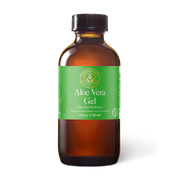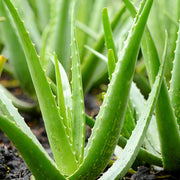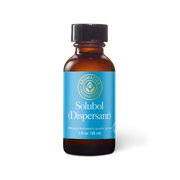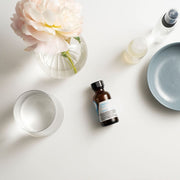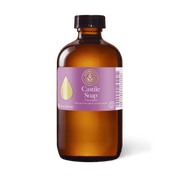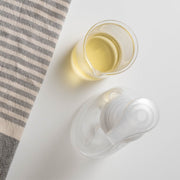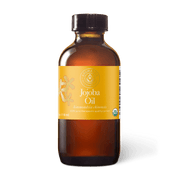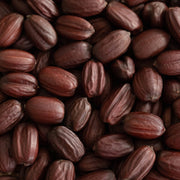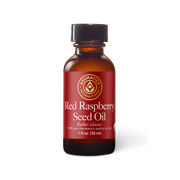Do you have your summer supply of organic aloe vera gel? It’s a key carrier for summer skin care!
Using pure aloe vera gel after sun exposure is one of the most soothing things you can do for your skin. But aloe’s uses don’t stop there! It’s a versatile carrier, good for daily skin care, reducing breakouts, cleansing your skin, and more.

In this post, you’ll learn why pure aloe vera gel is so skin soothing, how you can use it, and recipes to get started. Use this clickable list to jump to the information you need!
- How does aloe vera gel work?
- Can you blend essential oils into aloe vera gel?
- More ways to use aloe vera gel
- Aloe vera gel recipes!
How does aloe vera gel work?
The aloe plant has been used for millenia for natural wellness all across the world. The Ancient Greeks and Romans loved the aloe vera plant, and the Egyptians called it the “plant of immortality!”

Aloe vera gel is rich in polysaccharides, antioxidants (including vitamins A, C, and E), enzymes that can help reduce redness and discomfort, minerals (including copper, selenium, and more), fatty acids (including soothing plant steroids that can comfort soreness), and more constituents that help your skin stay clear and healthy. It can even be a treatment for minor cuts and acne flare ups.
At Aromatics, our aloe vera gel is cold-pressed from whole, organically grown leaves. It contains 100% intact polysaccharides.
Use this nourishing carrier to:
- Restore your skin after sun exposure
- Fight free radicals in anti-aging skin care
- Soothe red, itchy, irritated skin
- Calm breakouts
- And more!
Does aloe work to soothe sunburn? Some studies have indeed found that aloe vera accelerated the healing of first and second-degree burns. More studies are being done on this, and we have mountains of anecdotal evidence to support using aloe vera in this way.
Its moisture can be a huge benefit particularly in dry climates. It is also great as a relief from itching and is often used to help alleviate symptoms of a variety of skin conditions, such as eczema and psoriasis, but it is important to consult with your dermatologist to ensure you are treated properly for these conditions.

To get the most from aloe vera gel, it should be as fresh as possible.
Research shows that fresh aloe vera is safer and more effective than older aloe. Aloe vera gel is a water-based product, vulnerable to oxidation and bacterial growth. Keep your aloe vera gel in the fridge to prolong its shelf life. We also suggest getting fresh aloe vera gel as often as you need.
Can you blend it with essential oils?

The short answer is: absolutely!
However, aloe vera gel is a water-based carrier, so essential oils won’t blend into it easily. You’ll need something called a “dispersant.” Dispersants are ingredients that help keep essential oils distributed through a water-based carrier.
Solubol is an excellent example! Solubol is a natural emulsifier that allows oil- and water-based ingredients to combine. It has a mild aroma that won’t influence the scent of your blends.
More ways to use pure aloe vera gel
Use aloe gel all by itself!
It has a light, silky, gently cooling and drying feel. It absorbs quickly into the skin without leaving a greasy sensation.
Make water-based aloe blends
Being a water-based carrier, aloe gel combines easily with other water-based ingredients—such as hydrosols. Try making a soothing skin spray with aloe vera gel and lavender hydrosol!
Just remember that if you include essential oils in a water-based blend, you’ll need to include Solubol (or another dispersant).
It also blends well with liquid Castile soap. In daily skin care, it’s delicate drying touch makes it perfect for those with acne-prone or oily skin. It’s ideal for cleansing sensitive skin, and for roll-on acne sticks that calm any pesky spots that pop up throughout the day. (If you’re using essential oils in a blend with castile soap, you won’t need to include Solubol. The castile soap will act as a carrier for the essential oils.)
Blend aloe vera gel with oil-based carriers
This is a great way to make a soap-free face wash!
Go ahead and make a blend of aloe vera and jojoba or red raspberry seed oil. But remember that your aloe vera gel won’t stay combined with the oil-based ingredients. You’ll need to give your aloe vera products a good shake before using it each time.






